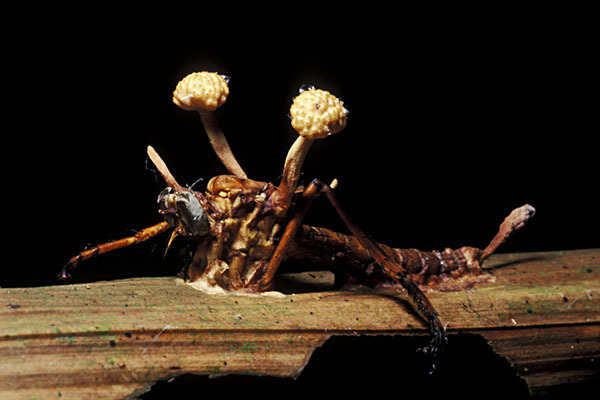
HICprevent
This award-winning blog supplements the articles in Hospital Infection Control & Prevention.
As Candida auris Emerges, a Pop-Culture Phenomenon Aids the CDC
April 6th, 2023

By Gary Evans, Medical Writer
Multidrug resistant fungus Candida auris — an infection control nightmare if it gets into healthcare settings — has spread to 17 new states since 2019, with clinical infections increasing 59% in 2020, then nearly doubling with a 95% jump in 2021, the Centers for Disease Control and Prevention (CDC) reports.
Even though half the states have not had a reported case, C. auris is taking on an inevitability that suggests it might become endemic in the United States.
“I think it’s still to be determined,” says Megan Lyman, MD, the lead author of the CDC paper and a medical officer in the agency’s mycotic diseases branch. “There are definitely areas where it is much more common, but I think there’s still a lot to do to prevent spread. Even if you’re not able to eliminate it, you want to decrease the number of cases as much as possible, because each one of those patients who becomes colonized could develop an infection or spread to somebody else.”
An unlikely ally in the offing is that fungi are having something of a pop-culture moment in podcasts, videos, and a popular post-apocalyptic television series. This could translate into more research funds and political will to meet the current threat of C. auris.
“The TV show has definitely increased awareness,” Lyman says. “We want to take advantage of this [public interest] to bring awareness to fungal diseases. People don’t realize how important fungal diseases are. So, we’re glad to get press, but we don’t want people to think that these diseases are going to turn them into zombies.”
The post-apocalyptic television show “The Last of Us” based its zombie premise on a fact in nature: the bizarre ability of cordyceps fungi to turn ants into automatons, robotically climbing plants and distributing spores. Found in tropical forests, Ophiocordyceps unilateralis somehow evolved this sinister technique, which the TV show extrapolates to humans.
“The degree of precision is remarkable,” Merlin Sheldrake, PhD, a fungi ecologist and author said in a video discussion. “So, you have for example, a carpenter ant. Cordyceps fungus will grow into the ant, into its body, its legs, through its cavities. It doesn’t grow into the brain, but it produces in the ant an irresistible urge to climb upwards, overriding the normal instinct of the ant to stay close to the ground.”
In a syndrome known as "summit disease," the ant climbs a plant and attaches itself in a death grip at an ideal height for dispensing spores from, say the bottom of a leaf.
“About 25 centimeters off the floor of the forest,” Sheldrake said. “The fungus kills the ant. It grows a stalk out of the ant's head, which rains down spores, which fall on other ants.”
Why couldn’t fungi do this to humans? Ants are not warm blooded. The body heat in humans thwarts spore growth, but researchers have specifically referred to the sudden 2009 appearance and rapid rise of C. auris as an example of climate change accelerating infectious diseases.
"The nearly simultaneous emergence of Candida auris on three continents, an event proposed to result from global warming, has raised the specter that increased warmth by itself will trigger adaptations on certain microbes to make them pathogenic for humans,” warns Arturo Casadevall, MD, PhD, a microbiologist at Johns Hopkins.
In this scenario, heat-tolerant fungi eventually could be selected out as the climate warms, possibly creating strains that can overcome the endothermal defenses of the immune systems in humans, mammals, and birds. Bats, the only flying mammal, are already under devastating fungi attack when they lower their body temperature to hibernate. So-called White Nose Syndrome is caused by the fungus Pseudogymnoascus destructans.
Neil Vora, MD, a pandemic prevention fellow at Conservation International in New York City, recently wrote a commentary saying he watched the first season of “The Last of Us” and was struck by its beginning.
“A 1960s talk-show host asks two epidemiologists what keeps them up at night. ‘Fungus,’ one replies,” Vora notes. “Scientists like me worry that climate change and ecosystem destruction may be creating opportunities for fungal pathogens to grow more infectious, spread over larger distances, and reach more people.”
Perhaps the increased awareness in academia, public health, clinical settings, and pop culture will elevate fungi to global attention and action. As it stands, we are unprepared, Vora concludes.
“No fungal vaccines exist, diagnosis is complicated and costly, and there are not enough drugs to combat fungi,” he emphasizes. “Unless governments fund research to better address fungal disease and reverse the environmental factors that fuel their emergence, we will remain vulnerable.”
For more on this story, see the next issue of Hospital Infection Control & Prevention.
Gary Evans, BA, MA, has written numerous articles on infectious disease threats to both patients and healthcare workers for more than three decades. These include stories on HIV, TB, SARS, SARS-CoV-2, pandemic influenza, MERS, Ebola, multidrug-resistant bacteria and fungi, smallpox, and Mpox. He has been honored for excellence in analytical reporting five times by the National Press Club in Washington, DC.
